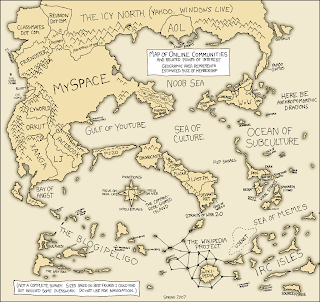Defining Web 2.0 is very simple, but it requires us to get rid of the divided world mentality. For example, as a professor at Radford University put it, in grade school we were taught that the playground was a social space and that the classroom was only a learning space. Including media in education only meant putting instructional messages into the media and displaying them in the class room.
But now with the advent of the Internet, we are more connected than ever. The World Wide Web made it possible to connect pictures, text and content from millions of users who had an Internet connection. But then not only content began connecting, but people too. Developers began including human interaction into the functionality of web-based computer applications. People could comment, tag, post and edit the content however they liked. The human experience rather than file content became the value of the media. That is what Web 2.0 is—people connecting.
The Internet is people driven. It is opinion based. It is a collective. It is immersive. It is participatory. It is growing at tremendous speeds.
If anything, I have tried through this blog to open my own eyes to social media. I am still learning, but now I am aware of what is going on. Many new developments are on their way. Google Labs is at the forefront of the Web 2.0 trend. But to end this blog, here is a quick video on Web 2.0 that summarizes many of the technologies I have learned in the past two months.
I would also include delicious tags in the list of things to know in the future.
But I would also like to offer a counterpoint to this entire blog. Yes, Web 2.0 is amazing. The buzz surrounding it is enormous, with corporations spending millions in order to keep on top of it. I am part of that trend. But I question how many people are actually participating.
In a recent article in TIME magazine, Bill tanker commented that Internet traffic data suggests that only a “very small percentage of Internet activity is related to users creating and publishing content.” He states that less than 1% of visits to most sites that focus on user-created materials are participatory, meaning that the remaining 99% of visits are passive and non-participatory.
Here are a few simple statistics about major social Web sites:
- 0.2% of visits to YouTube are users uploading a video
- 0.05% visits to Google Video include uploaded videos
- 0.16% of Flickr visits are people posting photos
- 4.5% of visits to Wikipedia resulting in content editing
It seems that most people are only watching and not participating. What type of a user are you? Are you a contributor or a leech?
And finally, is it really important to keep on top of the Internet trends that are happening so quickly? It can fast turn into an obsession. My reply is to be aware of what is going on, especially in the PR world. Be a contributor. As communicators, we are in the special position of having much information to share, and we need to know how to connect with people.
It seems almost counter intuitive that as we increase the number of connections online, the number of personal, real-life conversations are dwindling. As we have discussed before, technology seems to have eliminated human interaction on a physical level. Robert Putnam wrote on how society is becoming an individual experience because of technology in his book, Bowling Alone. Putnam talks about the decline of “social capital” and how important it is to American culture to combat it. Unlike Postman’s argument that a technopoly must be thwarted, Bowling Alone alludes that more studies technology can also help revitalize the personal connectedness of Americans.
Putnam talks about the decline of “social capital” and how important it is to American culture to combat it. Unlike Postman’s argument that a technopoly must be thwarted, Bowling Alone alludes that more studies technology can also help revitalize the personal connectedness of Americans.
I have personally concluded that technology did not kill human interaction and conversation. It just shifted it to a different medium. Technology enabled human connectedness around the records of life we all create, namely visual, audio and written media. Simply put, Web 2.0 is the modern record of human interaction.
For my fellow bloggers and social media users, here are two tools that have helped me immensely stay in touch with this living archive. The Blogger’s Toolbox and the RSS Toolbox both have quick summaries of the technologies and the many tools available to utilize them.
I would also encourage you to watch the Photosynth video I have posted in this blog. They have found a way to connect all the different elements of the living archive in order to form a more purposeful outcome than just an information glut.
At this instant, Web 2.0 is in the early adoption phase. But like most products, it is well on its way to being generally accepted. We must participate. We must contribute. Can we afford to be silent and not have our views included in the great debate that is the Web 2.0? If we don’t do the talking then who is?
We must participate because we cannot afford to lose this wave. If we do, we will be forever trying to catch up with it.










